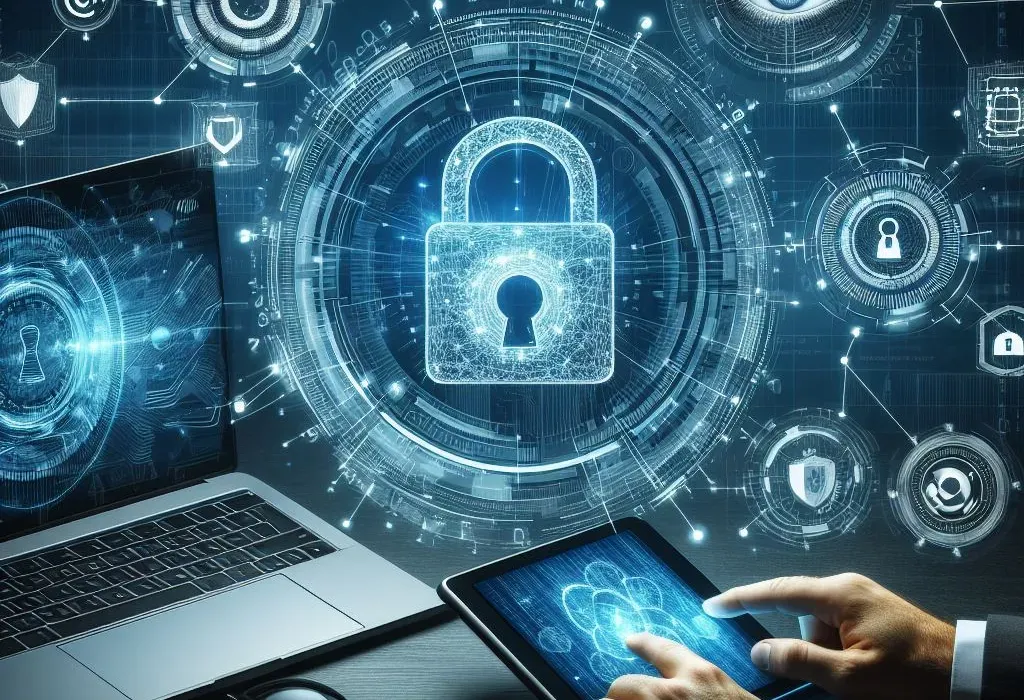Cybersecurity in the Age of Digital Transformation: Protecting Data in an Evolving World
In the age of digital transformation, cybersecurity is more critical than ever. With businesses, governments, and individuals relying on digital technologies, the need to secure information and protect against cyber threats has grown tremendously. This article explores the various aspects of cybersecurity today, covering the latest technologies, challenges, and strategies for safeguarding digital assets.
1. The Growing Importance of Cybersecurity in the Digital Era
As digital transformation accelerates, cybersecurity has become a top priority. Digital transformation, which involves adopting technologies like cloud computing, artificial intelligence, and IoT, brings new opportunities but also exposes systems to cyber risks. The importance of cybersecurity lies in protecting data from unauthorized access, breaches, and other cyber threats that could lead to financial losses, reputation damage, and legal repercussions.
2. Key Cybersecurity Challenges in the Digital Transformation Era
With new technologies come new challenges. Today’s cybersecurity landscape faces several pressing issues:
- Increased Cyber Attacks: Cyber attacks, such as phishing, ransomware, and malware, have increased significantly. Attackers constantly evolve their techniques, making it harder to detect and prevent intrusions.
- Remote Work Vulnerabilities: The shift to remote work has introduced vulnerabilities, as employees use personal devices and unsecured networks. Cybercriminals exploit these weaknesses to gain access to sensitive information.
- IoT Security Risks: The Internet of Things (IoT) has led to a surge in connected devices, but many lack robust security features. This makes them easy targets for hackers.
3. Emerging Cybersecurity Technologies
To counter cyber threats, organizations are adopting advanced technologies to enhance their cybersecurity efforts:
- Artificial Intelligence (AI) and Machine Learning (ML): AI and ML help detect patterns in data, enabling faster identification of potential threats. They can also analyze large volumes of data to detect anomalies, improving the speed and accuracy of threat detection.
- Blockchain for Secure Transactions: Blockchain technology offers a secure way to record transactions and store data. Its decentralized nature makes it difficult for cybercriminals to alter information, enhancing data security.
- Zero Trust Architecture: This security model assumes that no user or device is trusted by default, even if they are within the network. Zero Trust verifies every request, adding an extra layer of protection.
Read more about : Newztalkies.com
4. The Role of Cloud Security in Digital Transformation
As organizations move to the cloud, cloud security has become a major focus. Cloud providers offer tools and services to help protect data, but companies are still responsible for configuring and monitoring these environments:
- Data Encryption: Encrypting data in transit and at rest ensures that even if unauthorized access occurs, the information remains protected.
- Access Management: Implementing strong access controls, like multi-factor authentication (MFA), limits access to sensitive information and reduces the risk of data breaches.
- Regular Audits and Compliance: Regular security audits help identify vulnerabilities, and compliance with industry standards ensures that security measures are up to date.
5. The Importance of Cybersecurity Awareness and Training
Technology alone cannot secure an organization; employees play a crucial role in cybersecurity. Cybersecurity training and awareness programs educate employees about safe online practices, helping them recognize phishing attempts, avoid suspicious links, and follow security protocols.
6. Cybersecurity for Small Businesses
Small businesses are also vulnerable to cyber attacks but often lack the resources of large corporations. For small businesses, a basic cybersecurity strategy is essential:
- Use Strong Passwords: Password management tools can help employees create and store complex passwords securely.
- Implement a Firewall: A firewall acts as the first line of defense, blocking malicious traffic and securing the network.
- Data Backup: Regularly backing up data protects against data loss due to ransomware attacks or system failures.
7. The Role of Government and Regulation in Cybersecurity
Governments play a significant role in cybersecurity by establishing regulations and standards. These policies protect consumers and businesses, encouraging better security practices:
- GDPR: The General Data Protection Regulation (GDPR) in Europe protects personal data and mandates that companies secure customer information.
- CCPA: The California Consumer Privacy Act (CCPA) protects consumers’ data privacy rights, setting guidelines for how companies handle personal information.
- Cybersecurity Frameworks: Frameworks like NIST (National Institute of Standards and Technology) provide guidelines for managing cybersecurity risks, helping organizations develop a strong security posture.
8. The Future of Cybersecurity in the Digital Transformation Era
The future of cybersecurity in the digital transformation era will likely involve increased automation, with AI and ML playing larger roles. As digital transformation continues, the demand for skilled cybersecurity professionals will grow, with more investment in cybersecurity research and development. Cybersecurity must keep pace with evolving technologies to protect against new and sophisticated threats.
Conclusion: Embracing Cybersecurity in the Digital Transformation Journey
In the age of digital transformation, cybersecurity is essential for protecting data and maintaining trust. Embracing advanced technologies, training employees, and complying with regulations can help organizations stay secure. As the digital landscape evolves, cybersecurity in the age of digital transformation will remain a vital aspect of any organization’s strategy, much like Video Marketing for Small Businesses has become crucial for brand visibility and engagement. Ensuring that data, people, and systems are safe in this rapidly changing world is essential.







